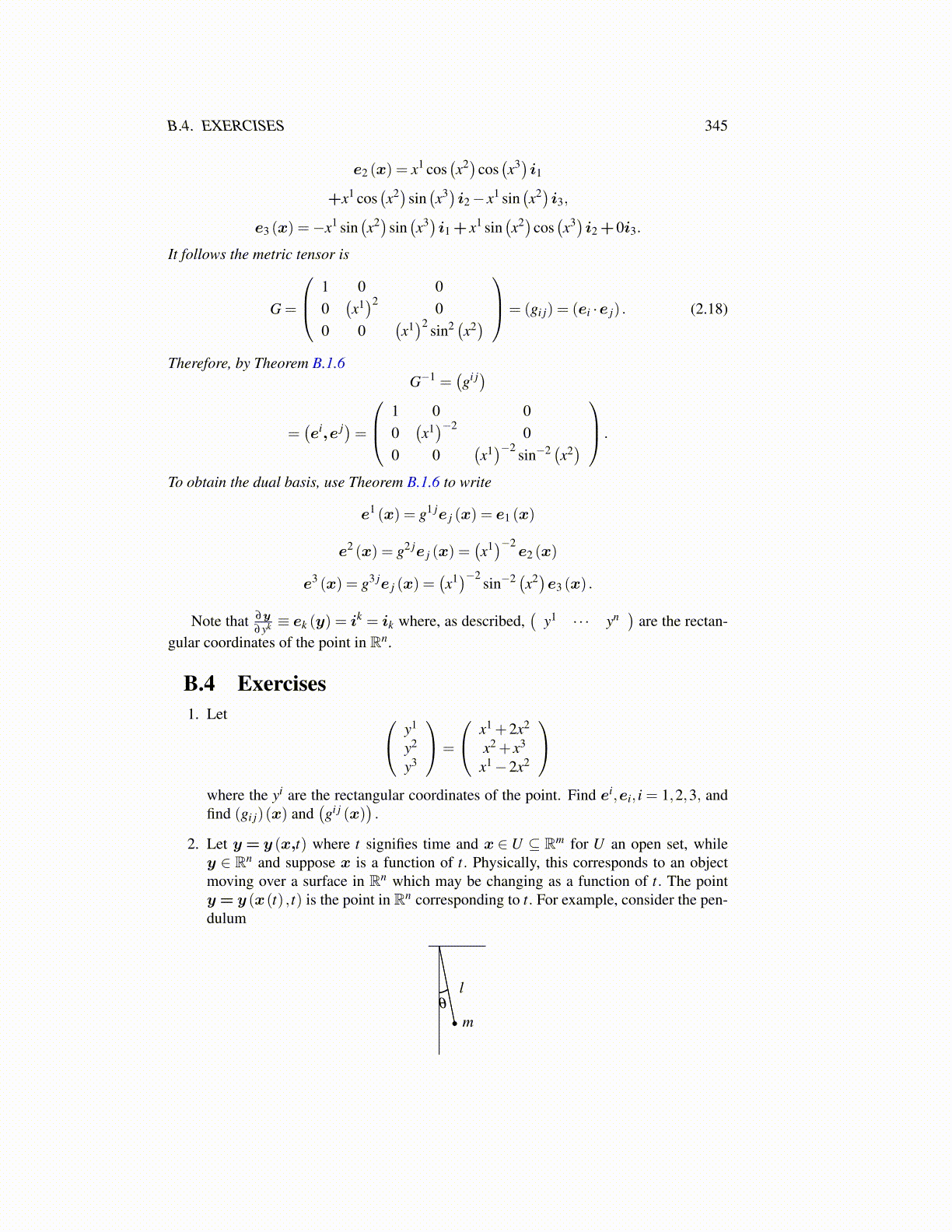
B.4. EXERCISES 345
e2 (x) = x1 cos(x2)cos
(x3)i1
+x1 cos(x2)sin
(x3)i2− x1 sin
(x2)i3,
e3 (x) =−x1 sin(x2)sin
(x3)i1 + x1 sin
(x2)cos
(x3)i2 +0i3.
It follows the metric tensor is
G =
1 0 00(x1)2 0
0 0(x1)2 sin2 (x2
)= (gi j) = (ei ·e j) . (2.18)
Therefore, by Theorem B.1.6G−1 =
(gi j)
=(ei,e j)=
1 0 00(x1)−2 0
0 0(x1)−2 sin−2 (x2
) .
To obtain the dual basis, use Theorem B.1.6 to write
e1 (x) = g1 je j (x) = e1 (x)
e2 (x) = g2 je j (x) =(x1)−2
e2 (x)
e3 (x) = g3 je j (x) =(x1)−2
sin−2 (x2)e3 (x) .
Note that ∂y
∂yk ≡ ek (y) = ik = ik where, as described,(
y1 · · · yn)
are the rectan-gular coordinates of the point in Rn.
B.4 Exercises1. Let y1
y2
y3
=
x1 +2x2
x2 + x3
x1−2x2
where the yi are the rectangular coordinates of the point. Find ei,ei, i = 1,2,3, andfind (gi j)(x) and
(gi j (x)
).
2. Let y = y (x,t) where t signifies time and x ∈ U ⊆ Rm for U an open set, whiley ∈ Rn and suppose x is a function of t. Physically, this corresponds to an objectmoving over a surface in Rn which may be changing as a function of t. The pointy = y (x(t) , t) is the point in Rn corresponding to t. For example, consider the pen-dulum
m
lθ